Java Reference
In-Depth Information
ImageIcon
objects that represent the default
Icon
and rollover
Icon
for the
JButton
cre-
ated at line 28. Both statements assume that the image files are stored in the
same
directory
as the application. Images are commonly placed in the
same
directory as the application or
a subdirectory like
images
). These image files have been provided for you with the
example.
Line 28 creates
fancyButton
with the text
"Fancy
Button"
and the icon
bug1
. By
default, the text is displayed to the
right
of the icon. Line 29 uses
setRolloverIcon
(inher-
ited from class
AbstractButton
) to specify the image displayed on the
JButton
when the
user positions the mouse over it. Line 30 adds the
JButton
to the
JFrame
.
Look-and-Feel Observation 12.10
Because class
AbstractButton
supports displaying text and images on a button, all sub-
classes of
AbstractButton
also support displaying text and images.
Look-and-Feel Observation 12.11
Rollover icons provide visual feedback indicating that an action will occur when when a
JButton
is clicked.
JButton
s, like
JTextField
s, generate
ActionEvent
s that can be processed by any
ActionListener
object. Lines 33-35 create an object of
private
inner class
ButtonHan-
dler
and use
addActionListener
to
register
it as the
event handler
for each
JButton
. Class
ButtonHandler
(lines 39-48) declares
actionPerformed
to display a message dialog box
containing the label for the button the user pressed. For a
JButton
event,
ActionEvent
method
getActionCommand
returns the label on the
JButton
.
Accessing the
this
Reference in an Object of a Top-Level Class from an Inner Class
When you execute this application and click one of its buttons, notice that the message
dialog that appears is centered over the application's window. This occurs because the call
to
JOptionPane
method
showMessageDialog
(lines 45-46) uses
ButtonFrame.this
rather
than
null
as the first argument. When this argument is not
null
, it represents the so-called
parent GUI component
of the message dialog (in this case the application window is the
parent component) and enables the dialog to be centered over that component when the
dialog is displayed.
ButtonFrame.this
represents the
this
reference of the object of top-
level class
ButtonFrame
.
Software Engineering Observation 12.2
When used in an inner class, keyword
this
refers to the current inner-class object being
manipulated. An inner-class method can use its outer-class object's
this
by preceding
this
with the outer-class name and a dot (
.
) separator, as in
ButtonFrame.this
.
The Swing GUI components contain three types of
state buttons
—
JToggleButton
,
JCheckBox
and
JRadioButton
—that have on/off or true/false values. Classes
JCheckBox
and
JRadioButton
are subclasses of
JToggleButton
(Fig. 12.14). A
JRadioButton
is dif-
ferent from a
JCheckBox
in that normally several
JRadioButton
s are grouped together and











